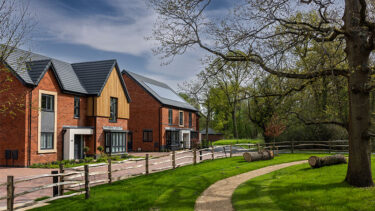With the Government’s focus currently on the Covid-19 pandemic, it could easily be perceived that that other pressing global issues like climate change have been placed on the backburner.
However, while Covid-19 is certainly set to be a high priority for the foreseeable, climate change remains the biggest single threat to our existence. In June, the UK Government became the first major economy in the world to pass laws to end its contribution to global warming by 2050.
At Wates, we are a strategic partner to the Department for Education, so as part of our Wates Summer Series, involving experts from across the industry, we discussed delivering zero-carbon school buildings. Stephen Beechey, Group Public Sector Director, shares the key discussion points from this workshop in the blog below.
Setting clear objectives
We were all in agreement that, while carbon management is a key priority, there’s a huge variance in what this can mean.
For some customers it is about a whole-life building proposition while others focus on embodied carbon, or operational energy efficiencies.
With operational carbon emissions amounting to around 25% of building emissions, and a further 10% linked to materials and manufacture, it is right that the focus is on low energy building operations. However, as operational building emissions decrease, embodied carbon will take over as the biggest contributor to emissions.
So clear objectives around carbon targets, definitions and budgets at pre-construction stage are essential to align expectations and deliver the right outputs.
Measuring performance.
Our experts all agreed that carbon measurement and data collection should be prioritised, to help improve decision making; however the clear methodology around how carbon is calculated needs to be addressed if we are to achieve a consensus that can be applied consistently across the supply chain.
But arguably a building’s performance can only really be measured most accurately once it’s operational, which adds another layer of complexity to the debate.
To establish where the biggest impacts can be made, we must first understand how school buildings are performing. Through their school construction frameworks, the DfE have been driving for better performance data, but the industry has been slow in responding, with quality and consistency widely varied.
Most commonly buildings are assessed according to a Building Regulations energy model (Part L) rather than in-use consumption. TM54 and SAP go some way to more accurately predict energy usage, however these are still only indicators of predicted performance. To deliver a building that uses energy as expected requires that the design is built as intended, effective commissioning of engineering systems and operational training for the building users.
Bridging the performance gap
With a large ‘performance gap’ between estimated and actual energy consumption we need to gain a good understanding of how our buildings perform to achieve net zero carbon. In simple terms, closing the performance gap relies on setting realistic targets, monitoring performance, and putting processes in place to reduce energy use. Perhaps more straightforward for new build projects, though retrofitting the existing school estate represents a far greater challenge.
In the UK, the Carbon Trust estimates that over half of the buildings that will exist in 2050 have already been built.
To help bridge that gap the DfE has invested in a number of pilot projects. We talked at length about Passivhaus standards, to give a robust method to help the industry achieve the legislative targets set for the UK Government. We discussed the possibility of smart retrofitting a building to assess performance, and some of the exciting technologies being developed to enable this.
Utilising technology
Smart technology definitely has a larger role to play schools are an ideal space to develop the use of application-based software and integrated design solutions. Large global technology players like Amazon and Google are already constantly innovating in this space.
This supported a point raised about utilising the best of smart technology while remembering and considering a school building’s end user educators who just need the building to work.
Currently the individual nuances around measuring carbon leaves projects vulnerable to risk and inaccuracies which then add costs not an ideal situation for customers or suppliers. Our debate also raised the valid point around compliance vs a reasonable incentive to go above and beyond when striving for a net zero carbon build.
Ultimately, we concluded in agreeing that net zero carbon currently has multiple meanings and garners a huge variance of perspectives. We need to collaborate as an industry to simplify this concept, while remaining sympathetic to its often wide-reaching definitions.
The clock is ticking on climate change, but it was reassuring to hear the will and determination from the industry to continue driving improvement in building exceptional, resilient, and environmentally-friendly schools.






